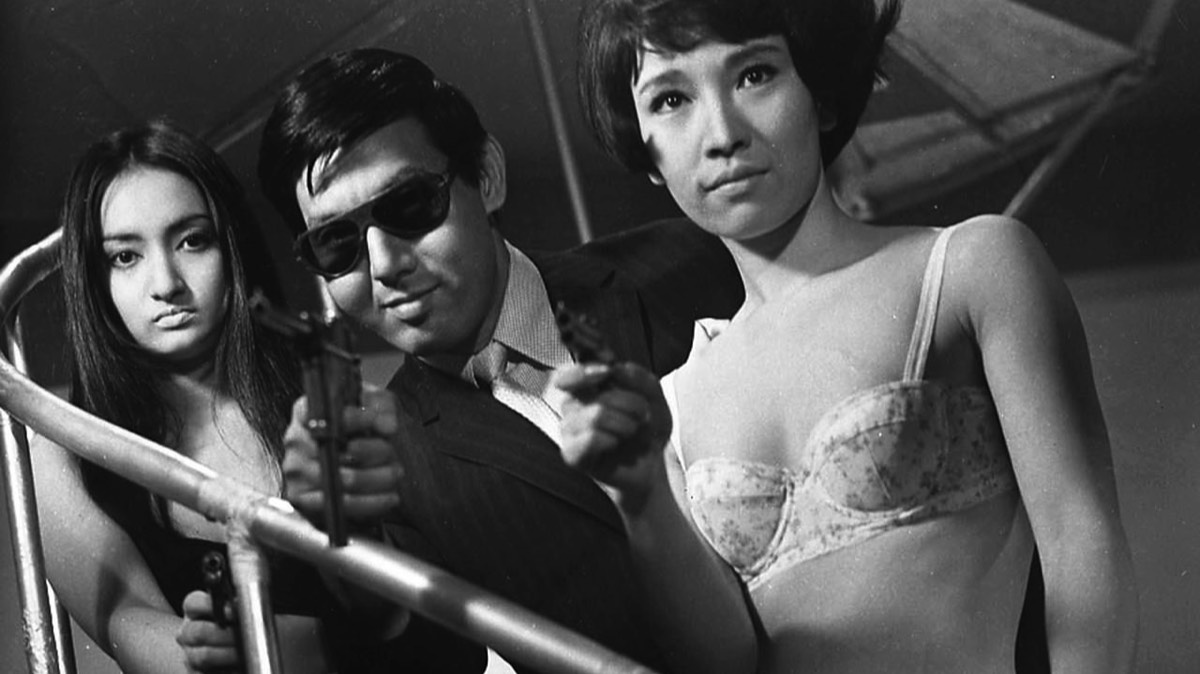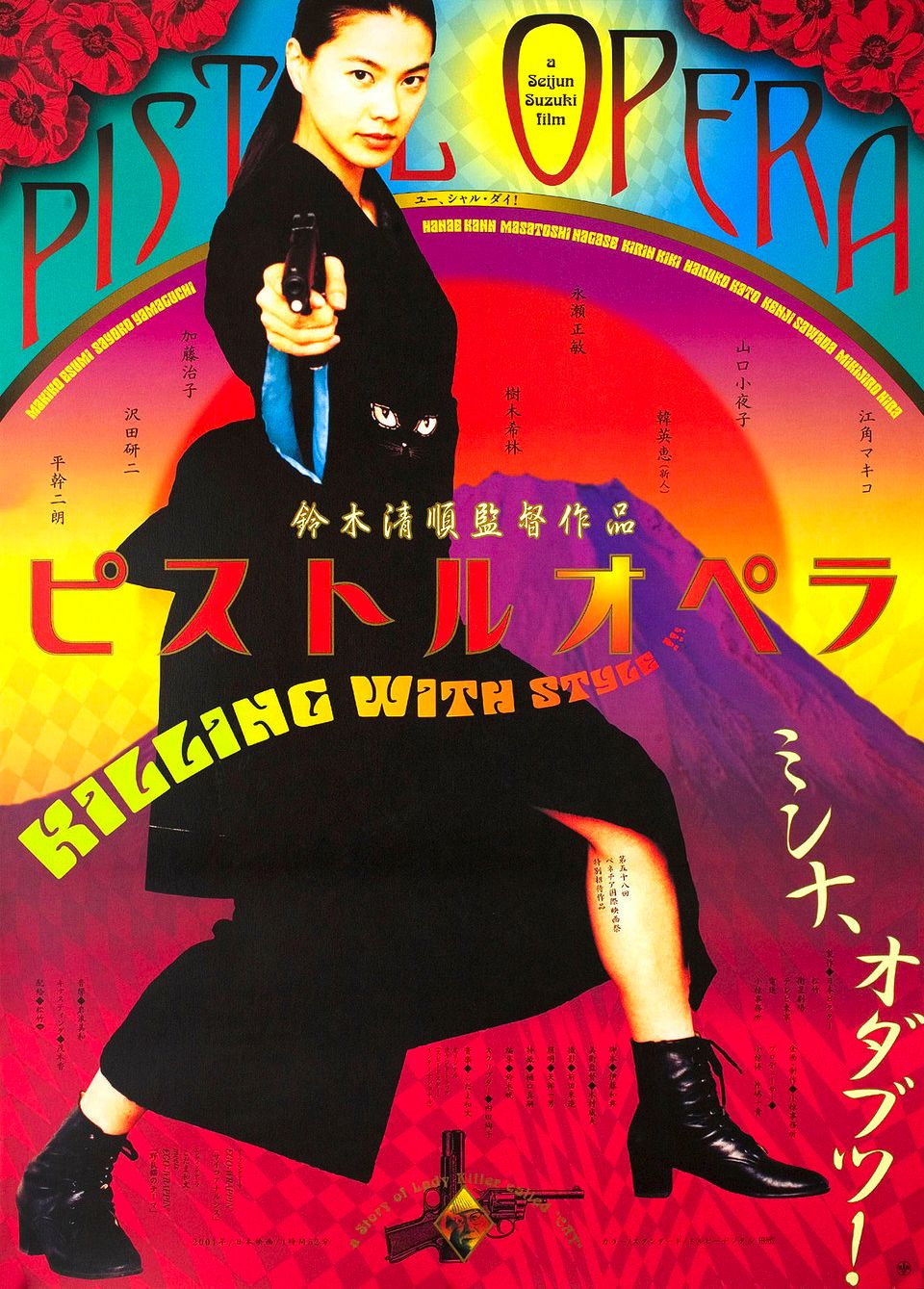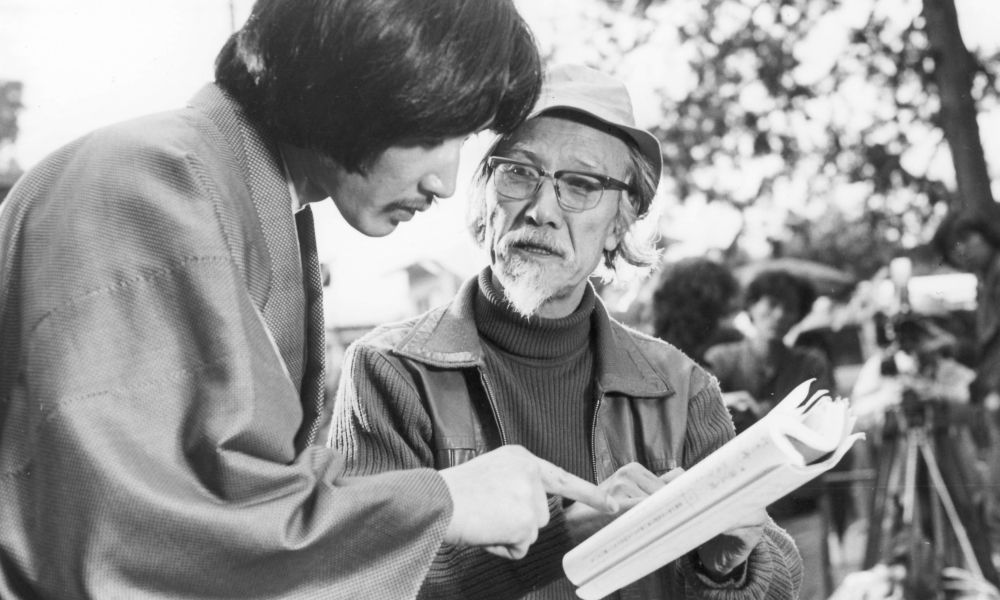"Suzuki churned out production-line crime films and erotic melodramas for Nikkatsu Studios for years, until success, confidence and boredom led him to play with the generic rules… Suzuki's best work succeeds both as inventive parody and as thrilling entertainment." - Geoff Andrew (The Director's Vision, 1999)
Seijun Suzuki
Director
(1923-2017) Born May 24, Tokyo, Japan
(1923-2017) Born May 24, Tokyo, Japan
Key Production Country: Japan
Key Genres: Drama, Crime, Crime Thriller, Erotic Drama, Gangster Film, Crime Drama, Thriller, Psychological Drama, Action, Juvenile Delinquency Film
Key Collaborators: Akira Suzuki (Editor), Takeo Kimura (Production Designer), Shigeyoshi Mine (Cinematographer), Kazue Nagatsuka (Cinematographer), Isao Tamagawa (Leading Character Actor), Keisuke Noro (Character Actor), Tamio Kawachi (Leading Character Actor), Naozumi Yamamoto (Composer), Kayo Matsuo (Character Actress), Jo Shishido (Leading Actor), Tomio Aoki (Character Actor), Yumiko Nogawa (Leading Actress)
Key Genres: Drama, Crime, Crime Thriller, Erotic Drama, Gangster Film, Crime Drama, Thriller, Psychological Drama, Action, Juvenile Delinquency Film
Key Collaborators: Akira Suzuki (Editor), Takeo Kimura (Production Designer), Shigeyoshi Mine (Cinematographer), Kazue Nagatsuka (Cinematographer), Isao Tamagawa (Leading Character Actor), Keisuke Noro (Character Actor), Tamio Kawachi (Leading Character Actor), Naozumi Yamamoto (Composer), Kayo Matsuo (Character Actress), Jo Shishido (Leading Actor), Tomio Aoki (Character Actor), Yumiko Nogawa (Leading Actress)
"A brilliant nonconformist, Seijun Suzuki was a B-movie director at the Nikkatsu Studio in the late 1950s and 60s whose work became increasingly abstract. Assigned lurid pulp melodramas and yakuza thrillers, Suzuki mixed up deliriously tacky rhapsodies of colour, design and sound with absurdist gags and choreographed action scenes, then scrambled this highly artificial mise en scène through surreal editing patterns. In 1967 he was fired by Nikkatsu for his 'incomprehensible' work, and didn't make another feature for ten years… Suzuki remains one of cinema's most cherished anomalies, an experimentalist and subversive who worked on the film factory production line." - Tom Charity (The Rough Guide to Film, 2007)
"Stylish director who broke boundaries in Japanese genre films. In the 1950s he became a contract director for the then-downtrodden genre-driven Nikkatsu Studios. There, he defined each of his assignments, be they yakuza (gangster), soft-core porno, or other genre type, with strong visuals and outlandish narratives that reflected his perceived tension between mu (nothingness) and keren (artifice)." - The Film Encyclopedia, 2012

Branded to Kill (1967)
"Suzuki achieved international fame belatedly, a quarter century after the visual flamboyance of his gangster pictures and his dismissal by a studio outraged by the liberties he took with generic material won him a cult reputation among students in Japan." - Alexander Jacoby (A Critical Handbook of Japanese Film Directors, 2008)
"The fact that Suzuki’s films can be appreciated even more now than at the time they were made is proof of his precocious, far-sighted talent. His films now appear diagrammatic of the modernist movement in cinema that grew from the transcendental visions of the alienation of modern living (Antonioni, Bergman, Bresson) and its transportations into postmodern art, beginning with Godard and Suzuki’s contemporary, Nagisa Oshima. Suzuki’s works appear even more precocious and contentious than either Godard’s or Oshima’s. He seems to bridge the kinetic mood of Godard with the more serious tones of Oshima. Today, it is easy to see how Suzuki, rather than Godard or Oshima, is clearly the progenitor of such contemporary directors as Wong Kar-wai, Sabu, John Woo, and Jim Jarmusch." - Stephen Teo ( Senses of Cinema, 2000)
"Essentially B-pictures, films such as Yaju no seishun (1963) (The Brute) and the historically set Irezumi ichidai (1965) (Tattooed Life) marked the director out as a Japanese Sam Fuller - someone who works within popular genres but still manages to bring his vast imagination to bear on projects, often taking them in unexpected directions… It was only in the 1990s that a new generation of young Japanese critics and directors began to be influenced by his pop art sensibilities." - Andy Willis (501 Movie Directors, 2007)
"According to critic Manohla Dargis, “To experience a film by Japanese B-movie visionary Seijun Suzuki is to experience Japanese cinema in all its frenzied, voluptuous excess.” Suzuki played chaos like jazz in his movies, from the anything-goes yakuza thrillers Tokyo Drifter and Branded to Kill to the daring postwar dramas of human frailty Gate of Flesh and Story of a Prostitute to the twisted coming-of-age story Fighting Elegy; he never concerned himself with moderation, cramming boundless invention into his beautifully composed frames, both color and black-and-white." - The Criterion Collection
"Suzuki brought an almost kabuki-esque theatricality to the pulp fodder he was assigned, through an expressive use of colour, baroque set designs, off-kilter compositions and jarring edits. His style became increasingly extravagant with the gangster movie Youth of the Beast (1963), which features a scene shot from beneath a glass floor, an exploding car enveloped in gaudy pink fog, and a sandstorm raging incongruously outside the window of a drug-addicted prostitute as she is punished by her pimp." - Jasper Sharp (The Guardian, 2017)
"A Japanese filmmaker who enlivened his low-budget genre movies with pop-art flair and avant-garde theatrics, inspiring American directors like Quentin Tarantino and Jim Jarmusch…. Mr. Suzuki was an important member of the Japanese New Wave, the generation of iconoclasts who defined themselves in opposition to older masters like Yasujiro Ozu and Kenji Mizoguchi, and whose films challenged the conventions of both Japanese aesthetics and Japanese society." - The New York Times, 2017
"Since I was working for a company, I couldn't deviate too much from the company's course. But because my films were in the B category, I had a wider range than an A director. Even if it went off a little bit, it wouldn't be too much of a problem with them. So in that sense I had a little bit of freedom. More than the A directors." - Seijun Suzuki (Midnight Eye, 2001)
Selected Filmography
{{row.titlelong}}
GF Greatest Films ranking (★ Top 1000 ● Top 2500)
21C 21st Century ranking (☆ Top 1000)
T TSPDT N 1,000 Noir Films R Jonathan Rosenbaum
21C 21st Century ranking (☆ Top 1000)
T TSPDT N 1,000 Noir Films R Jonathan Rosenbaum
Seijun Suzuki / Favourite Films
Arsenic and Old Lace (1944) Frank Capra, The Blue Angel (1930) Josef von Sternberg, Congress Dances (1931) Erik Charell, Daibosatsu tôge: dai-ippen - Kôgen itto-ryû no maki (1935) Hiroshi Inagaki, Daibosatsu tôge: Suzuka-yama no maki - Mibu Shimabara no maki (1936) Hiroshi Inagaki, Pépé le Moko (1937) Julien Duvivier, Rear Window (1954) Alfred Hitchcock, The Red Shoes (1948) Michael Powell & Emeric Pressburger, Singin' in the Rain (1952) Stanley Donen & Gene Kelly, Stagecoach (1939) John Ford, The Third Man (1949) Carol Reed.
Source: Sight & Sound (1992)
Arsenic and Old Lace (1944) Frank Capra, The Blue Angel (1930) Josef von Sternberg, Congress Dances (1931) Erik Charell, Daibosatsu tôge: dai-ippen - Kôgen itto-ryû no maki (1935) Hiroshi Inagaki, Daibosatsu tôge: Suzuka-yama no maki - Mibu Shimabara no maki (1936) Hiroshi Inagaki, Pépé le Moko (1937) Julien Duvivier, Rear Window (1954) Alfred Hitchcock, The Red Shoes (1948) Michael Powell & Emeric Pressburger, Singin' in the Rain (1952) Stanley Donen & Gene Kelly, Stagecoach (1939) John Ford, The Third Man (1949) Carol Reed.
Source: Sight & Sound (1992)
Seijun Suzuki / Fan Club
Makoto Shinozaki, Sano Cestnik, Claudia Siefen, Jonathan Rosenbaum, Filipe Furtado, Jasper Sharp, Kiyoshi Kurosawa, Andrew Schenker, Andreas Beilharz, Ryan Swen, Jim Jarmusch, Kaneto Shindo.
Makoto Shinozaki, Sano Cestnik, Claudia Siefen, Jonathan Rosenbaum, Filipe Furtado, Jasper Sharp, Kiyoshi Kurosawa, Andrew Schenker, Andreas Beilharz, Ryan Swen, Jim Jarmusch, Kaneto Shindo.
"Fan Club"
These film critics/filmmakers have, on multiple occasions, selected this director’s work within film ballots/lists that they have submitted.
These film critics/filmmakers have, on multiple occasions, selected this director’s work within film ballots/lists that they have submitted.


